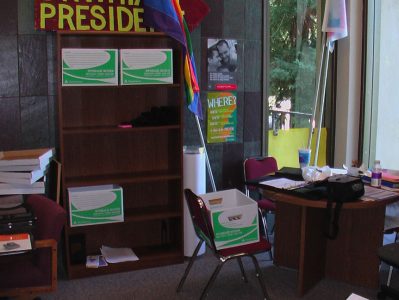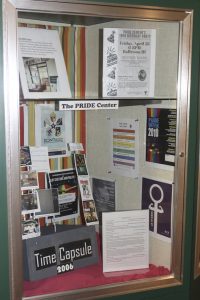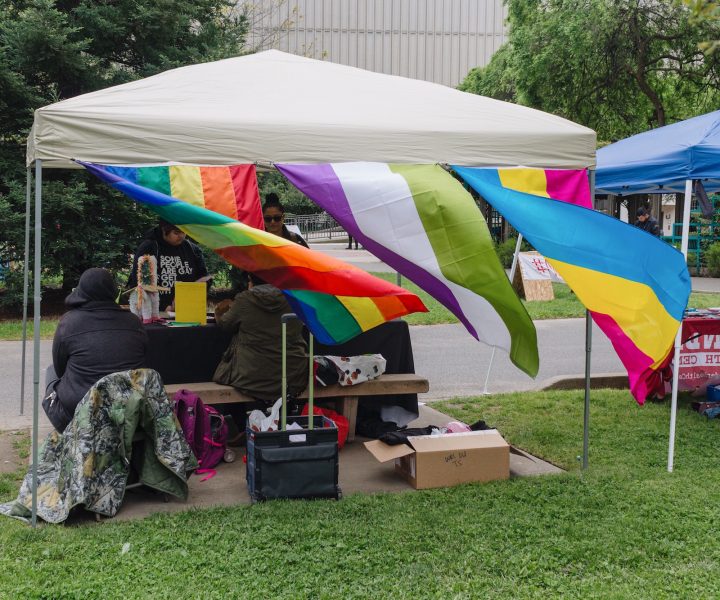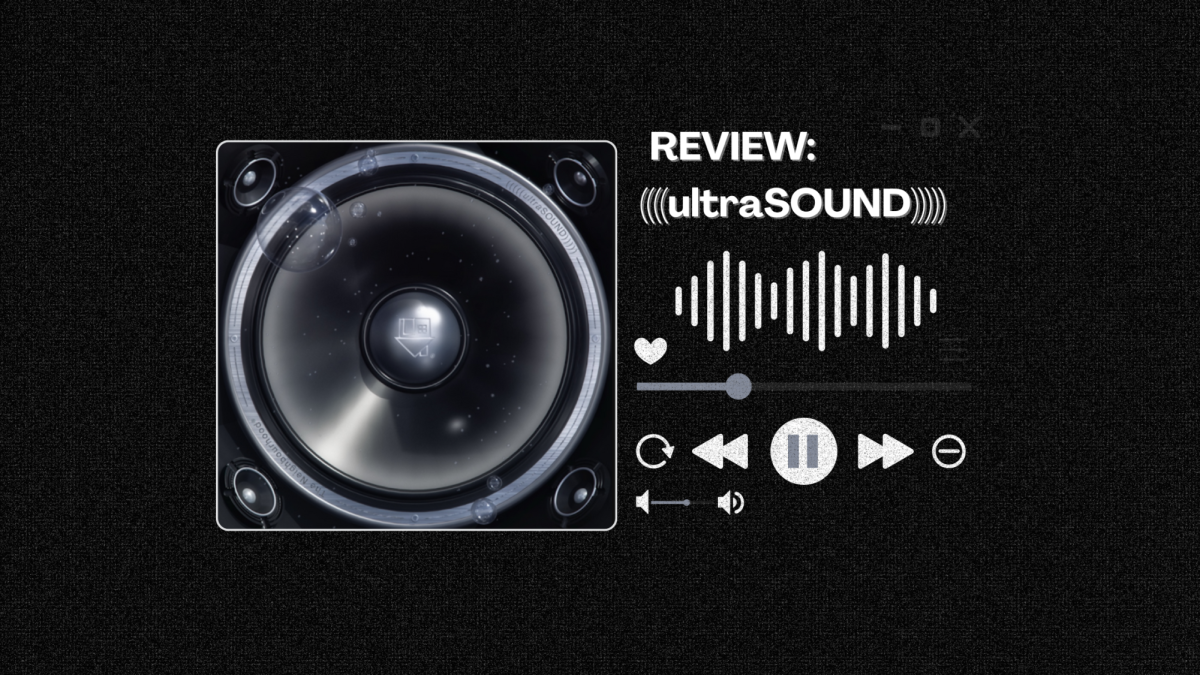Of course, LGBT students have been attending Sacramento State since its inception. Yet it was only about 10 years ago that the school provided the PRIDE Center to combine educational programming and access to community resources with an atmosphere of support and inclusivity.
Nicole Scanlan, a Sac State student in 2007, remembers trying to persuade both school administrators and Associated Students, Inc. representatives about the need for lesbian, gay, bisexual and transgender students to have a center on campus.
“Students from the Queer-Straight Alliance (now called the Queer Union) got together and met with university officials and lobbied for funding saying that students who were LGBTQ+ identified needed a safe space,” Scanlan said. “They needed an entity that could educate the campus community about the needs of the LGBTQ+ community and to train staff, faculty and students about how to provide safe spaces for students on campus.”
Scanlan said she knew the need for the PRIDE Center personally. Her parents hadn’t reacted well when she came out of the closet at the age of 16.
“It was a lot of hiding, a lot of sneaking around and doing things teenagers shouldn’t have to do,” Scanlan said. “At the time most people were living in and out. When they found folks supportive and affirmative of their identity they were out, but there’s always a hesitance about being out because you never know what people’s opinions and belief systems are.”
The PRIDE Center got up and running at the outset of the 2006-07 academic year, moving into a space in the now-defunct Foley Hall that was located where the American River Courtyard is now. (Story continues below)

Scanlan was co-coordinator of the PRIDE Center from 2007 to 2010, and during that time saw it gain more support from the campus community.
“We had plenty of threats to slash our funding while increasing funding to other groups for minority students. Was it as big as (2008 anti-LGBT protests at) American River College? No. But there was a subtle sense that we were not as important as other groups on campus,” Scanlan said. “Toward the end, there was more public support for the center on campus.”
The PRIDE Center is now located in the University Union, where it shares an office with the Women’s Resource Center.
Chris Kent, the current coordinator of the PRIDE Center, said that there is still a need for a place where students can seek support and faculty and administrators can seek information, in spite of some advances in LGBT rights over the past decade.
“One of the things that caused me to stay was finding a job here. I found friends. I found community. It was my ‘in’ to be involved on campus.” – Chris Kent, PRIDE Center coordinator.
While same-sex marriage is legal in all 50 states, Kent pointed to ongoing debates about transgender issues and President Trump’s executive orders rolling back Obama-era LGBT rights protections as evidence that the struggle is ongoing.
“I tend to push back against the narrative of progress,” Kent said. “That sounds like doom and gloom, but it’s just reality.”
Kent said that he couldn’t have been successful as an undergraduate without the center, which he first encountered after he started attending Sac State in 2011.
“I had a very lonely first semester here and there were times I thought about leaving,” Kent said. “One of the things that caused me to stay was finding a job here. I found friends. I found community. It was my ‘in’ to be involved on campus.”

Kent said that he hopes other students can find the support that he did.
“I think it’s nice for people all over campus to know that there’s a place where they can send folks who need a place (and) resources,” Kent said. “The center is providing programs and education to the campus.”
The PRIDE Center helps put on educational events of different stripes throughout the school year, some more geared toward academics (such as talks about various issues affecting the LGBT community) and others more geared toward socializing (such as this week’s makeup demonstration).
The center’s offices also contain information advertising where to find health care resources and who is looking to hire, as well as a box with different kinds of condoms.
Yozantli Lagunas Guerrero is a student program assistant at the PRIDE Center. They said that the center has helped them find fellow people who share their other experiences and identities with them.
“I’m from a very small, white place. It’s very conservative and it’s also very white, so when I came here I found so much diversity especially within LGBTQ communities,” Lagunas Guerrero said. “It was really a culture shock for me because it was me entering ‘I’m a person of color, I’m Queer, I’m Trans, I’m this,’ and being able to see folks who share those identities really was shocking — I really loved it, I really enjoyed it, and it really made me feel more at home.”
Scanlan, who now works as a graduate program support coordinator in the psychology department, said that she is proud of the work that the PRIDE Center has accomplished in helping LGBT students.
“I’m glad to see that LGBT youth can find safer spaces and that we as LGBT adults can help them in their efforts,” Scanlan said. “It’s really a wonderful thing.”
































































































































